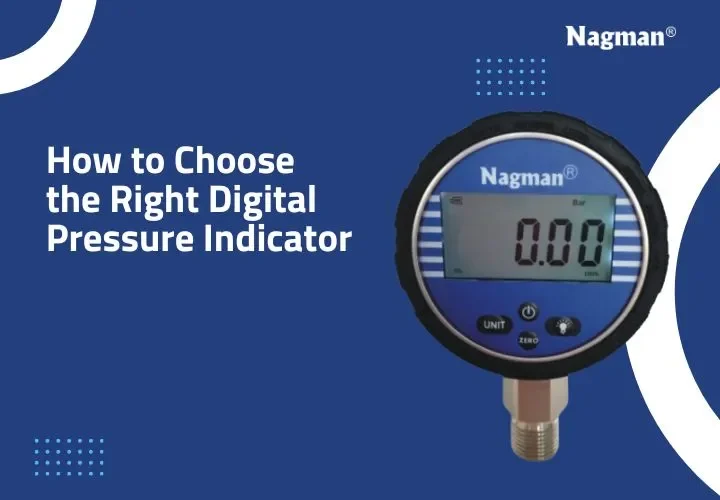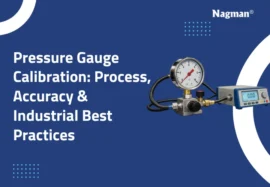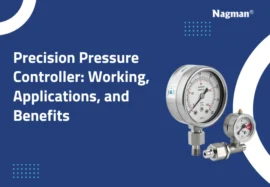Introduction to Digital Pressure Measurement
Pressure measurement finds important applications in myriad industries. The technology is said to be everywhere, there to measure tire inflation, test gas, liquid pressures, etc. With the advances in technology of this digital realm, many analog instruments have given way to handsome digital instruments in their convergence. One such device is the Digital Pressure Indicator, known for its accuracy and ease of use. They allow users to rapidly and accurately read pressure values.
What Is a Digital Pressure Indicator?
A Digital Pressure Indicator is an electronic device that measures and displays pressure levels. Unlike analog devices with needles and dials, these digital gauges project a reading onto a bright LCD or LED screen. The display is easy to read even in the dim light or if one is situated in a fast-paced area. Digital pressure indicators are often used with pressure calibrators and transmitters or as a part of system testing.
How Digital Pressure Indicators Work
A digital pressure indicator uses sensors—most commonly strain gauge sensors—to measure pressure changes accurately. When pressure is applied to the sensor, it converts the mechanical force into an electrical signal. This signal is processed by the device’s internal circuitry and displayed as a precise pressure reading on the digital screen. This method provides faster and more accurate measurements compared to traditional analog instruments.
Digital pressure indicators are often used alongside calibrators to verify the performance of other pressure instruments and to adjust their calibration. During these processes, the digital pressure indicator allows technicians to set reference points and monitor readings with high precision, ensuring reliable and consistent results
Essential Features of Modern Pressure Gauges
Modern Digital Pressure Indicators come equipped with many helpful features. Some of the popular ones include:
High-resolution display: Makes it easy to read the measurements.
Multiple unit options: Allows you to change from PSI to bar, kPa, etc.
Data logging: Saves readings for later reference and reporting.
Backlit display: Good for low-light situations.
Battery or external power options: Choice depends on the environment.
Comparing Digital vs. Analog Pressure Devices
When choosing a pressure measuring device, one of the key questions remains whether to opt for digital or analog. Let us compare:
Accuracy: Digital devices are more accurate, generally speaking.
Readability: The face of the digital device is more precise, hence easier to view.
Durability: Analog gauges may handle rough conditions better, but digital ones can handle harsh conditions too.
Cost: While analog costs are cheaper upfront, digital costs provide better long-term value due to higher accuracy and features.
Choosing the Right Indicator for Your Application
Not all Digital Pressure Indicators are made equal. What is best for your configuration will mainly depend on the application you work with. Ask yourself:
- What pressure range do I need?
- Am I looking for a portable one, or should it be fixed?
- What kind of environment will it be used in?
- Will it work together with pressure calibrators?
Your answers narrow down the options. For example, a field technician could require a rugged, battery-powered model with a protective case. Conversely, in a lab, they might want that high-precision unit for calibration work.
Accuracy, Pressure Range and Calibration Explained
Now, let’s talk about three very important factors:
- Accuracy: Always focus on the accuracy rate given by the device. An error of a little in pressure readings can cause big trouble when in tighter applications.
- Pressure Range: The pressure indicator should be selected considering its operating range. An over-range or under-range reading damages an indicator or gives wrong readings.
- Calibration: Integrated and periodic calibration should be the mantra of every Digital Pressure Indicator. Pressure calibrators can be used for this purpose to ensure the continuing accuracy of the device over time, or some indicators may even calibrate themselves.
Conclusion
A digital pressure indicator is a must-have tool for anyone working with pressure measurements. Unlike old-style analog indicators, it is precise, easy to read, and comes with smart features that make monitoring and calibration simple. Using the right digital pressure indicator saves time, ensures safety, and gives accurate results—whether for daily checks or high-precision calibration.
Before buying, think about what you need and check the features carefully. A good digital pressure indicator, along with a reliable calibrator, ensures accurate measurements and smooth performance every time.






